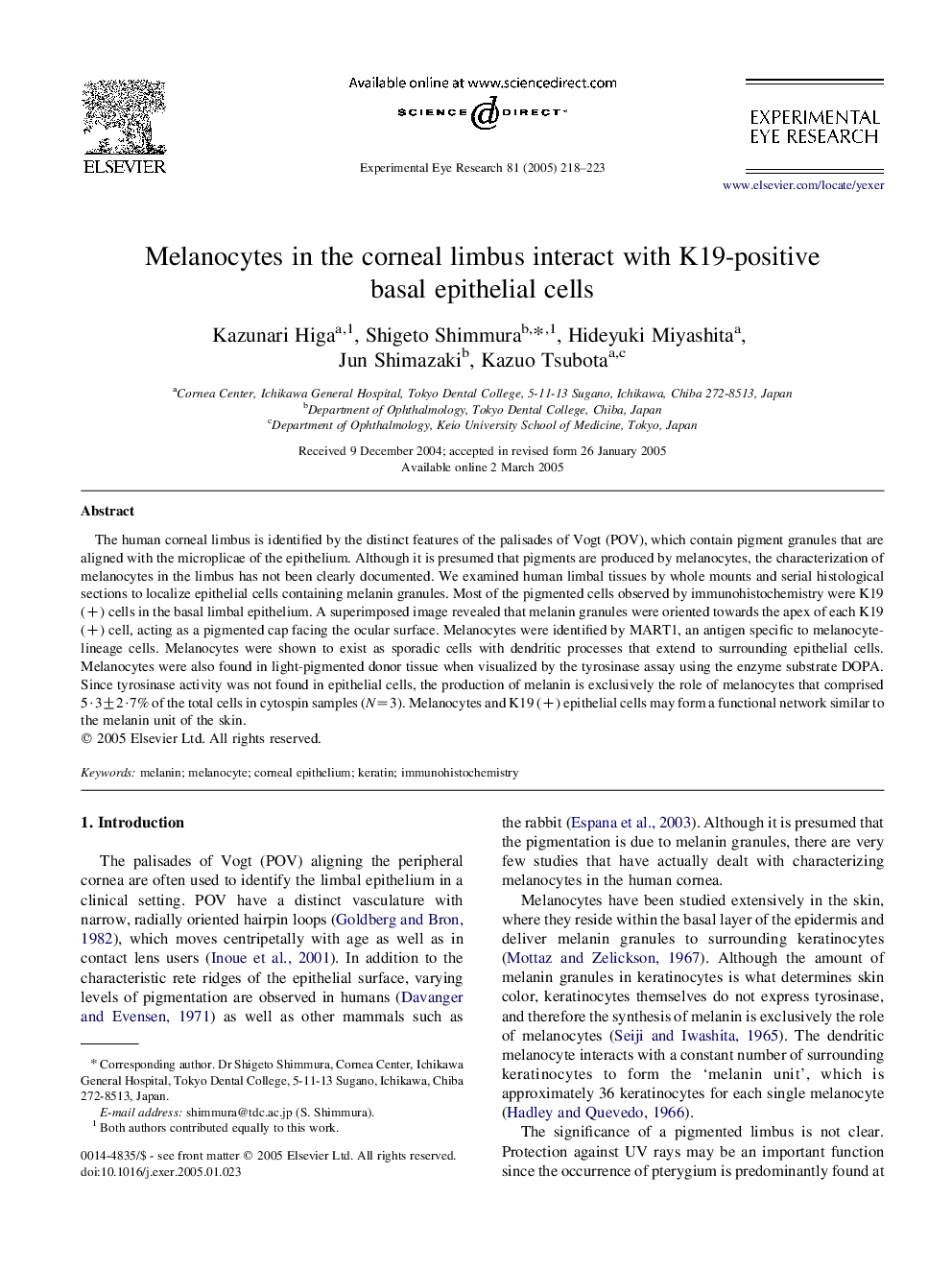| کد مقاله | کد نشریه | سال انتشار | مقاله انگلیسی | نسخه تمام متن |
|---|---|---|---|---|
| 9341912 | 1261245 | 2005 | 6 صفحه PDF | دانلود رایگان |
عنوان انگلیسی مقاله ISI
Melanocytes in the corneal limbus interact with K19-positive basal epithelial cells
دانلود مقاله + سفارش ترجمه
دانلود مقاله ISI انگلیسی
رایگان برای ایرانیان
کلمات کلیدی
موضوعات مرتبط
علوم زیستی و بیوفناوری
ایمنی شناسی و میکروب شناسی
ایمونولوژی و میکروب شناسی (عمومی)
پیش نمایش صفحه اول مقاله

چکیده انگلیسی
The human corneal limbus is identified by the distinct features of the palisades of Vogt (POV), which contain pigment granules that are aligned with the microplicae of the epithelium. Although it is presumed that pigments are produced by melanocytes, the characterization of melanocytes in the limbus has not been clearly documented. We examined human limbal tissues by whole mounts and serial histological sections to localize epithelial cells containing melanin granules. Most of the pigmented cells observed by immunohistochemistry were K19 (+) cells in the basal limbal epithelium. A superimposed image revealed that melanin granules were oriented towards the apex of each K19 (+) cell, acting as a pigmented cap facing the ocular surface. Melanocytes were identified by MART1, an antigen specific to melanocyte-lineage cells. Melanocytes were shown to exist as sporadic cells with dendritic processes that extend to surrounding epithelial cells. Melanocytes were also found in light-pigmented donor tissue when visualized by the tyrosinase assay using the enzyme substrate DOPA. Since tyrosinase activity was not found in epithelial cells, the production of melanin is exclusively the role of melanocytes that comprised 5·3±2·7% of the total cells in cytospin samples (N=3). Melanocytes and K19 (+) epithelial cells may form a functional network similar to the melanin unit of the skin.
ناشر
Database: Elsevier - ScienceDirect (ساینس دایرکت)
Journal: Experimental Eye Research - Volume 81, Issue 2, August 2005, Pages 218-223
Journal: Experimental Eye Research - Volume 81, Issue 2, August 2005, Pages 218-223
نویسندگان
Kazunari Higa, Shigeto Shimmura, Hideyuki Miyashita, Jun Shimazaki, Kazuo Tsubota,